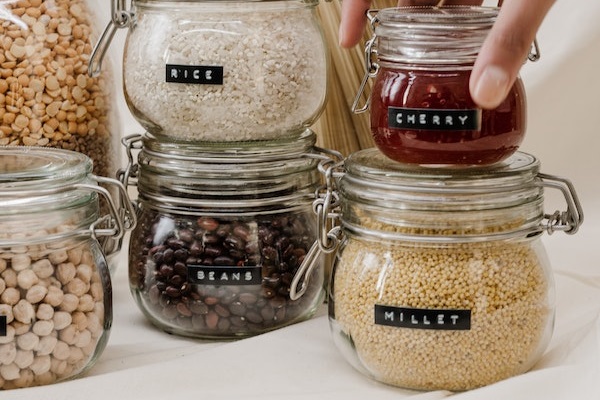The most pressing issue today is rural-urban dichotomy, more so with regard to nutritional intake. It is a fact too that urbanisation and globalisation have ruffled the dynamics. Now, the problem of malnutrition pervades all settings — what’s more, market-driven forces seem to only exacerbate the whole issue, from the ground up.
Rural Scenario
The early farmers’ diet, in India, was wholesome — it included an array of millets, green leafy vegetables, whole unpolished pulses, curd, ghee, and other natural produce. The consumption of crops, such as wheat, rice, and maize, was largely confined to festivities and other occasions. However, with the advent of the Green Revolution and a paradigm shift in urban lifestyles, the demand for rice and wheat skyrocketed.
Consequently, the farmers began to focus on large-scale production of such cereals — as commercial crops — and, relied on the local market’s poor quality and cheap, non-nutritive produce to fulfil their requirements. They ignored the traditional practices of crop diversification and millets that used to form an integral part of their diet and their importance was lost. Millets were soon grown in small pockets of dry areas, where the lack of rainfall did not permit the cultivation of rice and wheat. Moreover, the farmers’ fragmented and small landholdings could only support a few crops of commercial interest — as a source of income generation.
Urban Scenario
While the diet of the farmer in the rural setting has been compromised, urban lifestyles show no positive sign — as their diet is far from being nutritious. A point of no return. Polished cereals and refined flour are consumed on a daily basis — this has only increased, also heightened, our exposure to certain lifestyle disorders, viz., heart disease, diabetes, obesity, attention-deficit hyperactivity syndrome [ADHD], among others. Also, cereals that are rich in gluten do not suit people suffering from celiac disease.
Nutrition Sensitive Agriculture
It is clear that the nutritional requirements of rural and urban residents have to be suitably met and due attention must be given in this regard. Since urban dietary needs are fulfilled by farmers, the International Fund for Agriculture Development [IFAD] has called for “nutrition-sensitive agriculture” which focuses on the availability and affordability of diverse, nutritious, and safe foods to meet the dietary needs of people of all ages, at all times.
Under the ambit of the project, households in Odisha, to highlight one example, have been provided with storage capabilities that reduce food loss and equipment that processes nutritious grains, like millets. Further, cooking demonstrations and nutrition classes have helped in establishing home gardens and in raising poultry and goats. This initiative for transforming agriculture and food systems to become nutrition-sensitive would certainly help in the achievement of balanced, sustainable rural-urban growth, provided additional impetus is given to the production of millets.
Focus On Millets
Millets are the oldest crops known to humankind. They were first domesticated in Asia and Africa, and later across the globe as a cereal crop, aiding the evolution of civilisations. In the Indian subcontinent, millets have been a staple for more than 5,000 years; they have supported our rich agricultural biodiversity, no less. Some examples: sorghum, bajra, ragi, foxtail, kodo, barnyard, proso, browntop and little millet. Among these, sorghum has the highest production.
During the 1960s, millets were grown in quantities comparable to that of cereals as they were a staple crop in many parts of the country. The rural folks found millets cheap, easy to grow, and heavily relied on them to meet their subsistence needs. However, urban consumers, who were economically better off, could afford cereals, like rice and wheat, and preferred them due to their fineness, quality and texture, as compared to millets. As a result, millets became the poor man’s food, or diet.
Over the years, with globalisation and consumerism on a high, this rural-urban gap narrowed and the concept of consuming millets vanished, initially at the urban level and, thereafter, at the rural level. This sidelining of millet cultivation at all levels could be considered a major factor responsible for the nutritional insecurity and malnutrition in our country. It is, therefore, imperative to include millets in the daily basket of our diet.
Initiatives
The Government of India [GoI] has taken several initiatives to promote millet cultivation and create awareness on the nutritious value of millets. The idea of 2018 being declared as the Year of Millets has helped in increasing the cultivation of millets and also boosting their market demand. Steps have been taken to promote millet consumption, their value addition, manufacturing of various millet-based innovative products, and their marketing through start-ups. At the cultivation level, farmers are working in collectives to improving production, quality and direct marketing. This has augmented income generation as well as crop diversification for their well-being.
The UN declared 2023, under the aegis of the GoI, as the International Year of Millets — to ensure not only nutritional security, but also the availability of nutritional alternatives to popular cereals, without putting pressure on the depleting natural resources of the planet.
To present the potential and enhance the nutritional value of fast foods, the Millet Culinary Carnival at Dilli Haat, in New Delhi, recently, showcased the continental cuisine prepared out of millets. It highlighted that millets have an important place and can be substituted in all kinds of cuisine, while retaining its pristine taste and texture along with nutrition.
Conclusion
The world is at the crossroads of various challenges. This also pertains to the environment and health. Millets are a promising food to addressing such issues. All attempts to adopt millets should, therefore, be made on a war footing, because they hold the key to overcome malnutrition, lifestyle diseases and to develop and also sustain a healthy society — one that can aspire to achieve Sustainable Development Goals [SDG] by 2030.


A good take on ancient worldly wisdom and contemporary practice to reviving a forgotten healthy practice.